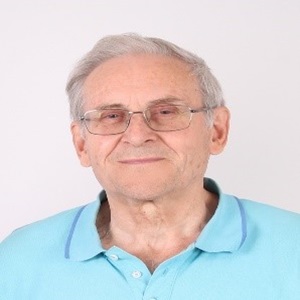Abstract Detail

Мikhail Kashchenko
Ural Federal University, Russia
Abstract
Semi-classically, by analogy with the Bohr model for the hydrogen molecule, the muon catalysis reaction can be interpreted as a consequence of the attraction of a pair of protons to a muon rotating in a ring orbit, the plane of which is perpendicular to the line connecting the protons. Since the mass of a muon is 207 times greater than the mass of an electron, an estimate based on electrostatics shows that the radius of the muon orbit Rµ ≈ 10-13 m is of the order of the interproton distance. As shown in [1, 2], this scale can be compared with the maximum value of the radius of strong interaction during the exchange of nucleons by π0 – mesons. But then the repulsion of protons can be overcome without their tunneling.
The report proposes an interpretation of the observed low - temperature nuclear reactions based on a model that generalizes the muon catalysis variant. In the generalized model, the catalytic functions of the muon are performed by CRN - activators, which are ring orbits with N compact massive electron (ee) - pairs [1, 3]. The spins in (ee) - pairs are opposite, and the attraction is due to the contact interaction [4], which dominates on the scales (10-14 - 10-15) m. The pair rotates and has an angular momentum ħ. It is assumed that the bombardment of substances by a stream of electrons (or current discharges in a matter) is accompanied by an increase in the number of (ee) - pairs, and with a sufficient amount N of (ee) - pairs, CRN-activators are formed. We emphasize that the CRN - activator, located между ядрамис зарядами q1 и q2 (для определенностисчитаем q1 < q2). Тhe charge is expressed in units of elementary charge. Of course, the condition q1 ≥ 1 is satisfied. Then, the value of N corresponds to the smallest integer satisfying the inequality
N > q1/ 2, x = q2/ q1. (1)
In addition to the condition (1) necessary for bringing nuclei closer together, the synthesis reactions of massive nuclei also require the absorption of (ee) - pairs, which ensures the fulfillment of the law of conservation of electric charge and the condition of reaction exothermicity. Preliminary enrichment of the electron shells (occupying deep circumnuclear orbitals) of interacting atoms with massive (ee) - pairs facilitates the synthesis reactions. It is clear that for the addition of a hydrogen nucleus, the participation of CR1 - activator or a quasi-neutron [5], is sufficient. It is important that the synthesis of massive nuclei can proceed autocatalytically in several stages, when the formation of a new nucleus with a large charge and mass is accompanied by the synthesis of CRN-activators with an increased N value [6]. It is also important to emphasize that the capture of (ee) - pairs by electron shells modifies the chemical properties of atoms, opening a new direction in materials science. The existence of modified atoms is supported by mass spectroscopy data [7].
Biography
Dr. Kashchenko studied Physics at the Ural Polytechnic Institute, USSR and graduated as engineer in 1971. In 1974 he received the degree of Candidate of Physical and Mathematical Sciences. In 1987 he received the degree of Doctor of Physical and Mathematical Sciences, and in 1990 the title of Professor. From 1980 to the present, he has been the head of the Department of Physics at the Ural State Forest Engineering University. He developed a dynamic theory of martensitic transformations and proposed a conceptual solution to the problem of low-temperature nuclear reactions. He published 4 monographs and about 200 articles.
